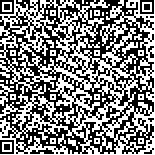| 摘要: |
| [摘要] 目的 探讨广西地区耳聋基因突变与人工耳蜗(CI)植入术后疗效的关联性,为评估CI术后疗效提供参考。方法 选择2012年7月至2019年12月在广西地区行CI植入术并行耳聋基因检测的广西语前聋患者104例,根据基因突变情况分为突变组(14例)和非突变组(90例)。应用听觉行为分级标准(CAP)和言语可懂评分标准(SIR)评分对患者术后3个月、6个月及12个月的疗效进行评估。结果 104例患者中有14例患者检出致聋基因突变,突变率为13.46%。GJB2基因突变2例,其中c.235delC纯合突变1例,c.299delC杂合突变1例。SLC26A4基因突变10例,其中c.IVS7-2A>G杂合突变8例,c.919-2A>G/c.1614+5G>A复合杂合突变2例。OTOF基因c.1273C>T/c.4994T>C复合杂合突变1例。TRIOBP基因c.5185-2A>G/c.3299C>A复合杂合1例。两组患者术后3个月、6个月和12个月的CAP、SIR评分均呈上升趋势(P<0.05),但两组变化差异无统计学意义(P>0.05)。结论 CI植入能显著提高语前聋患者的听力情况,但耳聋基因突变对CI植入的短期术后疗效无显著影响。 |
| 关键词: 人工耳蜗 耳聋基因 术后疗效 |
| DOI:10.3969/j.issn.1674-3806.2022.03.07 |
| 分类号:R 764.5 |
| 基金项目:国家自然科学基金资助项目(编号:82060190);广西科技厅重点研发项目(编号:桂科AB17292089);广西医疗卫生适宜技术开发与推广应用项目(编号:S201421_05,S2017078);广西卫生健康委科研课题(编号:Z2014215,Z2016593,Z20170366) |
|
| A study on the relationship between deafness gene mutation and the postoperative efficacy of cochlear implant surgery in Guangxi region |
|
HUANG Lan-cheng, LIN Zuan-ping, TANG Feng-zhu, et al.
|
|
Department of Otolaryngology Head and Neck, the People′s Hospital of Guangxi Zhuang Autonomous Region, Nanning 530021, China
|
| Abstract: |
| [Abstract] Objective To explore the relationship between deafness gene mutation and the postoperative efficacy of cochlear implant(CI) surgery in Guangxi region, and to provide reference for evaluating the postoperative efficacy of CI. Methods One hundred and four cases of prelingual deafness patients who underwent CI implantation and deafness gene detection in Guangxi region from July 2012 to December 2019 were selected and divided into mutation group(14 cases) and non-mutation group(90 cases) according to their gene mutations. Categories of Auditory Performance(CAP) and Speech Intelligibility Rating(SIR) scores were used to evaluate the efficacy of the patients 3 months, 6 months and 12 months after surgery. Results Deafness gene mutation was detected in 14 of 104 patients, and the mutation rate was 13.46%. There were 2 cases of GJB2 gene mutation, including 1 case of c.235delC homozygous mutation and 1 case of c.299delC heterozygous mutation. There were 10 cases of SLC26A4 gene mutation, including 8 cases of c.IVS7-2A>G heterozygous mutation, and 2 cases of c.919-2A>G/c.1614+5G>A compound heterozygous mutation. There was 1 case of OTOF gene c.1273C>T/c.4994T>C compound heterozygous mutation. There was 1 case of TRIOBP gene c.5185-2A>G/c.3299C>A compound heterozygous mutation. The CAP and SIR scores showed an upward trend in the patients in the two groups 3 months, 6 months and 12 months after surgery(P<0.05), but there were no significant differences in the changes between the two groups(P>0.05). Conclusion CI implantation can significantly improve the hearing of patients with prelingual deafness, but the deafness gene mutation has no significant effect on the short-term efficacy of CI implantation. |
| Key words: Cochlear implant(CI) Deafness gene Postoperative efficacy |

